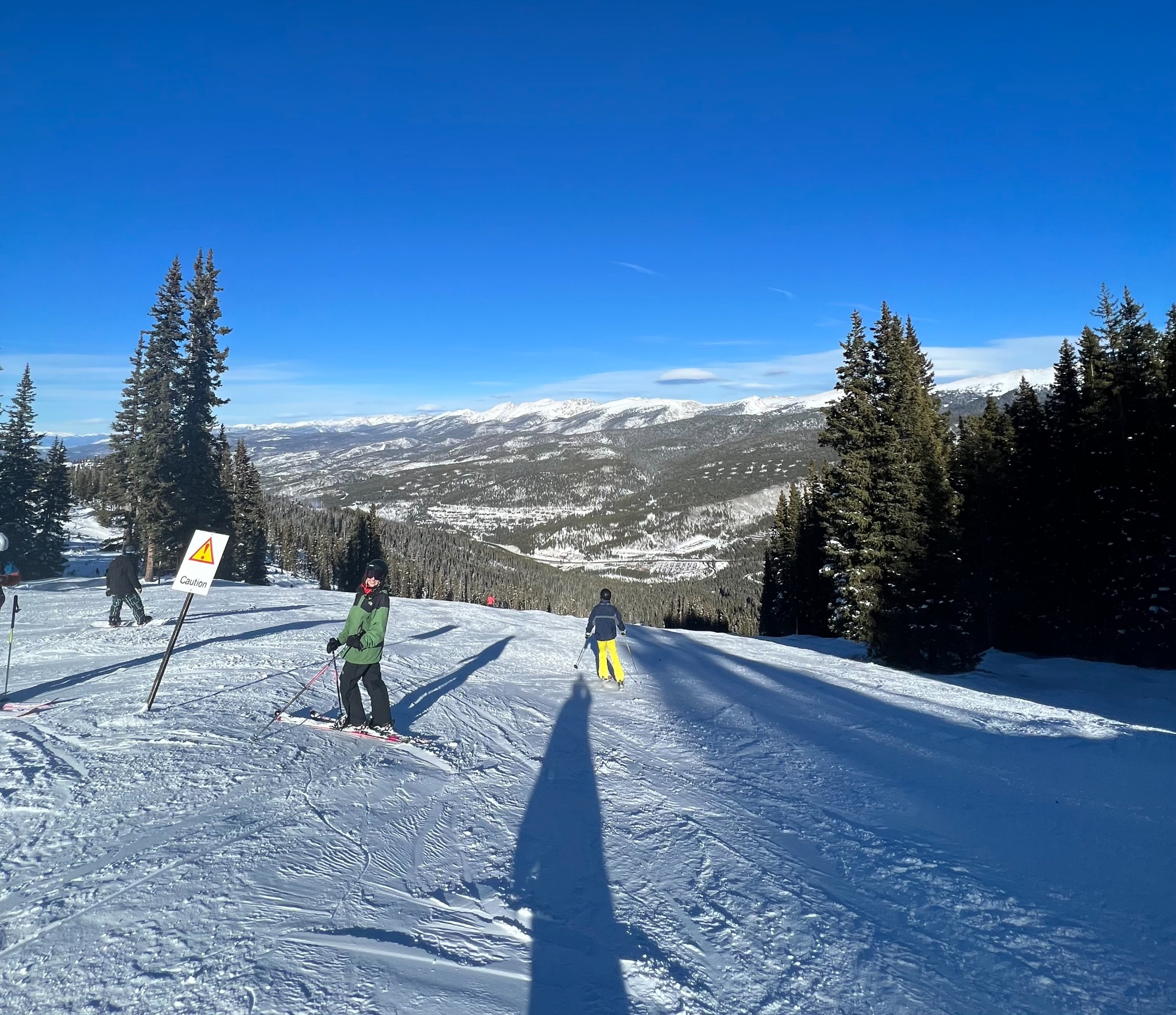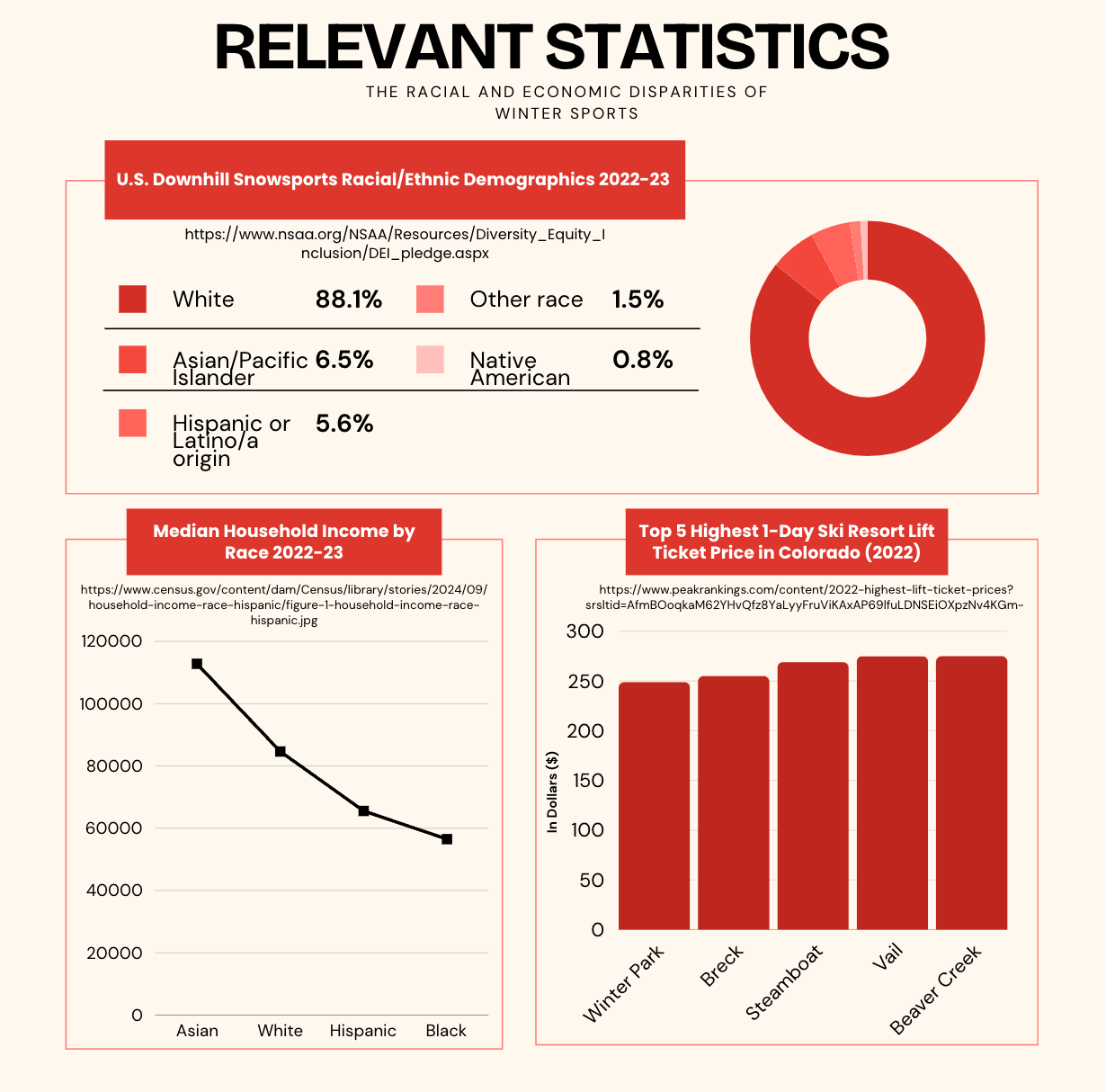
The Racial & Economic Disparities of Winter Sports
"It comes down to the fact that I do not have the same socioeconomic standing as a lot of these white kids do,” says Grace Walsh

SUBTITLES:
MacKenzie Cole: Picture this: the crisp air, snow-covered peaks, and the thrill of gliding down on a powder day. Winter sports like skiing and snowboarding have captured our imagination for quite some time, especially in a place like Colorado.
Nat Sounds: Snow falling on the lake at Kittridge Pond.
MacKenzie Cole: Somehow beneath what might seem pristine lies an awfully uncomfortable reality. Grace Walsh, a current buff and member of Boulder Free Ride, shares her experience as an Asian-American from a small town in Massachusetts, battling the stark racial and economic disparities that shape access to these experiences.
Grace Walsh: “My first high school only had, total, probably about 350 kids. Just from a socio-economic standpoint, was less fortunate than most of the public high schools in Massachusetts, I would say. So they didn't have a ski team.
Nat Sounds: Ski poles being removed from Grace’s bag.
MacKenzie Cole: The gap between black and white annual household incomes is about $29,000 per year. This wealth gap automatically prices many individuals out of the sport, with even a wider spread amongst Hispanic and Indigenous people. Julia Reinhardt, a Colorado local working with the Office of Boards and Commissions, helps share how her team understands and is working to fix these discrepancies.
Julia Reinhardt: “I'd help my team research and outreach to really rural areas, just because we thought everybody's input is obviously important and should be represented.
Nat Sounds: Footsteps on the snow.
MacKenzie Cole: The price of a ski pass in Colorado varies, but on average, it ranges between $100 to over $200 per day; even then, Ikon passes, which are known to give you more bang for your buck, range between $500 to $1,500. This leaves us with the understanding that skiing remains an exclusive sport. CU Boulder, known for its strong winter sport culture, reflects this exclusivity.
Grace Walsh: “My hope, the sort of dream that I envisioned, was that I would get here and I would find sort of my niche, especially with something like Free Ride. But over time, the sort of shininess of it all starts to wear away. It comes down to the fact that I do not have the same socioeconomic standing as a lot of these white kids do.”
MacKenzie Cole: While there has been a pre-existing racialization of skiing amongst imagery in places. It often comes to a surprise to many who have not had the pleasure of studying snow sport history. Yet, it is deeply suppressing to many who have not even had the chance at participating, particularly when there's a financial aspect to it.
Grace Walsh: “Hobbies are a part of your health, and having something that isn't your work or your school or your required daily things is a huge part of your health. But when you are working four jobs to make ends meet, you don't even have time to think about what hobby you would enjoy, let alone go out and buy skis, get fitted for boots, get a car, figure out a way to get the skis in your car. That's another weird barrier.”
MacKenzie Cole: The effort to make skiing more inclusive is something that will take systemic change.
Nat Sound: Nature/bird sounds from the CU Boulder campus
Julia Reinhardt: “I think Colorado takes a lot of pride in its environment and ensuring that every Coloradan has access to whatever sport it may be – just making it more racially equal for everybody to participate in such a fun, adventurous sport.”
MacKenzie Cole: Until then, one thing is clear. We know that dismantling these barriers will take time, but we must keep calling for inclusivity.
Post a comment